GENERAL SITUATION IN MEXICO
Weekly Review I May 21, 2025






Weekly Review I May 21, 2025








Background:
• On May 12, 2025, the U.S. and China announced a temporary de-escalation in trade tensions through a 90-day reciprocal tariff reduction agreement.
• The U.S. lowered tariffs on a wide range of Chinese imports from up to 145% to 30%, while China reduced tariffs on U.S. goods to 10%, aiming to stabilize bilateral trade and global markets.
• The agreement excludes high-tech sectors such as semiconductors and defense-related technologies, where tensions remain.
• This move is a strategic pause to allow for renewed negotiations but does not represent a full resolution of the trade war that intensified under previous administrations.
• The temporary nature of the agreement has led to cautious optimism among multinationals, especially those with cross-Pacific supply chains
• The tariff reduction is expected to temporarily lower prices on electronics, consumer goods, and apparel—categories heavily reliant on Chinese imports.
• However, retailers such as Walmart and Target have signaled that price relief may be marginal, as many suppliers have already shifted to higher-cost countries during prior tariff waves.
• E-commerce platforms like Temu and Shein have suspended certain direct-to-consumer shipments due to the residual effects of regulatory changes and uncertainty.
• American consumers may not see significant price decreases unless the tariff reductions are extended or made permanent.
• Analysts warn that any reversal or failure in negotiations could trigger a new wave of price volatility.

• The tariff rollback is expected to reduce inflationary pressure slightly, potentially lowering U.S. core PCE inflation by 0.2–0.3 percentage points in the second half of 2025.
• However, JP Morgan and other financial institutions warn that the economic boost may be short-lived without structural agreement.
• If talks fail and tariffs are reinstated, U.S. GDP growth could fall below 1.5%, and the Federal Reserve may face renewed pressure to adjust rates.
• China’s economy, already strained by real estate and demographic issues, could benefit modestly from improved export flow.
• European Union has welcomed the move but cautioned that structural trade reform is still needed, particularly regarding subsidies and IP protections.
• Southeast Asian nations (Vietnam, Malaysia, Indonesia) remain wary, as they have gained manufacturing share during the U.S.–China tensions and may now see reduced investment inflows.
• Taiwan’s role in chip supply chains remains under pressure amid heightened geopolitical risk.
• U.S. allies such as Japan and South Korea are closely watching the evolution of trade rules and market access terms in key industries.
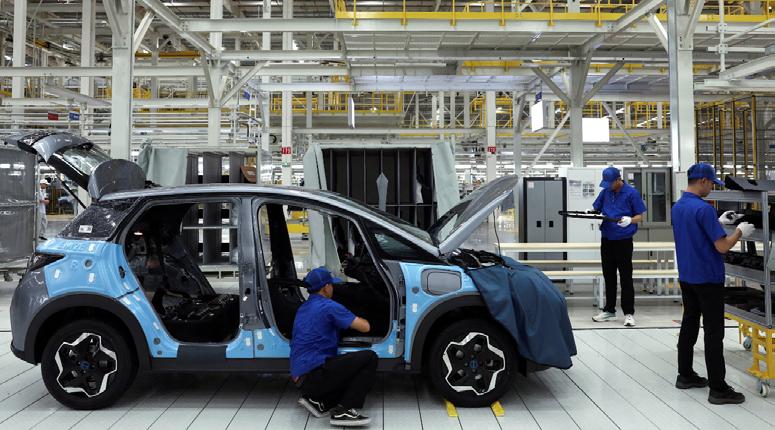
• The agreement offers temporary relief to multinational manufacturers with operations in China and Southeast Asia.
• However, many firms have already regionalized or nearshored part of their supply chains, and are unlikely to reverse those decisions in the short term.
• Tech, automotive, and retail industries remain highly exposed to trade policy volatility and logistical reconfigurations.
• U.S.-based companies with joint ventures in China continue to face non-tariff barriers, including data localization and cybersecurity scrutiny.
• The semiconductor and green tech sectors remain strategically excluded from tariff relief, as both countries view them as critical to national security and industrial policy.cross-Pacific supply chains
SOURCE: REUTERS
• INITIATIVE WITH DRAFT DECREE TO AMEND ARTICLE 123 OF THE POLITICAL CONSTITUTION OF THE UNITED MEXICAN STATES.
Presented by: Deputy Ciria Yamile Salomón Durán (Hgo - PVEM) (See actor’s profile)
Purpose: Establishes that for every six days of work, the worker must enjoy at least two days of rest.
Status: 2025-05-14 – Published in the Parliamentary Gazette

• INITIATIVE WITH DRAFT DECREE TO AMEND AND ADD VARIOUS ARTICLES TO THE GENERAL HEALTH LAW
Presented by: Deputy Margarita García García (Oax - PT)
Purpose: Recognizes the right to health services via information and communication technologies, ensuring privacy, security, and inclusion. Adds a chapter on remote medical care, integrating telesalud to improve health service efficiency and access, with consent, authorization, and data protection requirements.
Status: 2025-05-14 – Published in the Parliamentary Gazette


The construction of a new rail customs facility on the Mexican side of the Tijuana-San Ysidro border will be completed in June 2025, enabling export operations to begin the following month, according to Antonio Otáñez, director of Admicarga. Initiated in November 2024, the project includes a new operations building and gamma-ray scanning technology from the UK. Initially, it will handle 5,000 to 5,500 export containers per year, significantly increasing rail capacity utilization from 35% to 70%. This development aims to shift exports—currently sent as empty containers—into fully loaded shipments of finished goods produced in Tijuana, helping reduce truck congestion and emissions while lowering logistics costs for the maquiladora industry. The García station will serve as the main loading point, and trucks will still be used for first and last-mile transportation.
SOURCE: INDUSTRIAL NEWS BC
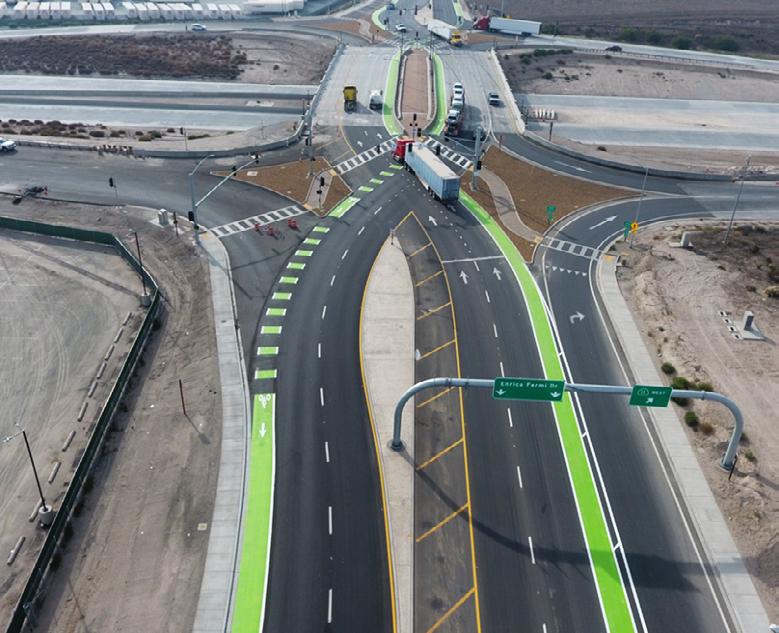


NUEVO LEON
The mayors of Brownsville, Laredo, and San Antonio met in Monterrey with Nuevo Leon Governor Samuel García to strengthen economic collaboration between South Texas and northern Mexico. Discussions focused on bilateral trade, border infrastructure, and strategic projects like the Colombia Customs and the new highway to Texas, aimed at boosting commercial connectivity. Shared priorities included investment attraction and preparations for the 2026 FIFA World Cup. Officials from both sides emphasized the importance of cross-border cooperation, highlighting key infrastructure like the Colombia Bridge and affirming their commitment to identifying mutual economic opportunities.
SOURCE: MEXICO NOW
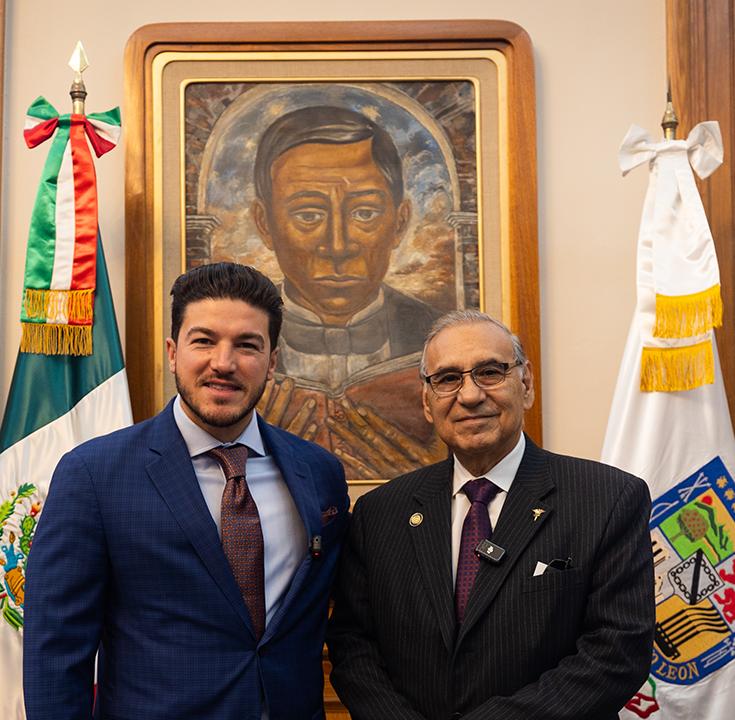

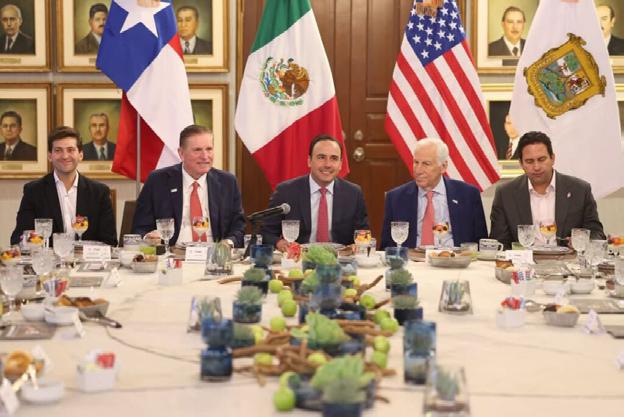

Coahuila Governor Manolo Jiménez Salinas met with members of the Texas Business Leadership Council to explore new avenues for economic cooperation between Coahuila and Texas. The governor highlighted the state’s strengths in exports, the automotive and auto parts industries, and emphasized opportunities in public safety, infrastructure, education, culture, and tourism. The meeting brought together Texas business leaders from sectors including sports, finance, and technology, alongside Coahuila’s economic cabinet and Saltillo officials, aiming to deepen cross-border collaboration rooted in shared economic and historical ties.
SOURCE: MEXICO NOW

The second edition of the International Diploma in Semiconductors has officially begun, bringing together 32 professionals from academia and industry to strengthen Chihuahua’s innovation ecosystem. Organized by CIMAV in collaboration with SIDE, Cenaltec, Coparmex Chihuahua, and Poniente 2050, the program combines theoretical training in Chihuahua with hands-on experience in Texas. This binational structure aims to develop specialized talent for the semiconductor industry—one of the most strategic sectors of the 21st century. The initiative aligns with Governor Maru Campos’ State Development Plan, focusing on talent retention, technical training, and international collaboration to position Chihuahua as a national leader in semiconductor workforce development.
SOURCE: GOVERNMENT OF CHIHUAHUA

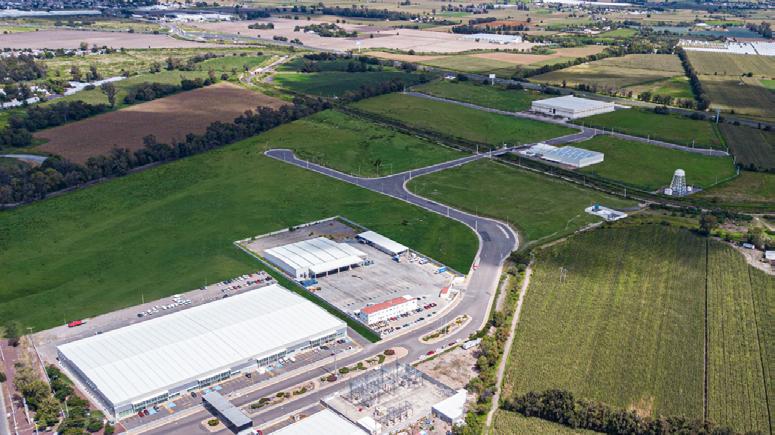

Guanajuato announced it has 3,650 hectares available across 47 industrial parks in 17 municipalities to attract new domestic and foreign investments. As part of Governor Libia Dennise García Muñoz Ledo’s strategy to diversify the state’s economy and create better-paying jobs, the government is partnering with the private sector to expand strategic infrastructure. These parks, meeting federal and local standards, are equipped with essential utilities and services to ensure operational efficiency and competitiveness. The initiative aims to strengthen local supply chains, foster sustainable investment, and support regional workforce development under the vision of a “New Beginning.”
SOURCE: CLUSTER INDUSTRIAL

Querétaro has been selected to host the 31st edition of the Mexican Foreign Trade Congress, one of the country’s most important business events, taking place from October 29 to 31 at the Querétaro Congress Center. Organized by COMCE, the event will bring together business leaders, exporters, and national and international authorities to strengthen Mexico’s global presence amid a challenging international landscape. COMCE leaders highlighted Querétaro’s strategic role in manufacturing and foreign trade, with advanced industries like automotive, aerospace, and agri-food. The congress aims to promote economic development through public-private collaboration and internationalization, with high-level guests including Secretary of Economy Marcelo Ebrard and Canadian Ambassador Cameron Mackay.
SOURCE: MEXICO INDUSTRY


Between May 11 and 14, 2025, Manola Zabalza Aldama, head of Mexico City’s Ministry of Economic Development (SEDECO), visited Japan to strengthen economic, technological, and sustainable ties. She met with key Japanese institutions and corporations, including JICA, JBIC, METI, Mitsui, Mitsubishi, Toyota Tsusho, and others. Japan is currently the fourth-largest foreign investor in CDMX, with $726.6 million in FDI in 2024, mainly in manufacturing, tech, and finance. Over 1,100 Japanese companies operate in Mexico, and 5,000–6,000 Japanese nationals reside in the capital. The mission aimed to position CDMX as a global innovation hub, supported by the new investment agency InCDMX. As a result, SEDECO returned with a concrete agenda including cooperation agreements, circular economy projects, and commitments that will benefit entrepreneurs, students, and the general public. The initiative signals Mexico City’s drive to enhance its global economic presence and boost innovation and sustainability through strong ties with Japan.
SOURCE: MUNDO EJECUTIVO

GEODIS, in collaboration with Prologis, has launched a 619-kilowatt rooftop solar installation at Prologis Park Grande in Tepotzotlán, State of Mexico. The system will generate around 892 megawatt-hours of low-carbon electricity annually, advancing GEODIS’s climate goals and reducing its Scope 2 emissions. This initiative is part of GEODIS’s broader commitment to cut greenhouse gas emissions—42% from its fleets and buildings and 25% in outsourced transport carbon intensity by 2030, compared to 2022 levels. Strategically located in a major industrial zone, the project enhances energy resilience, reduces operational emissions, and supports green building certifications. Prologis also aims to deploy 1 gigawatt of solar energy across its global real estate portfolio by 2025. The installation is scalable, with potential for battery storage and microgrid integration. In Mexico’s challenging energy market, the system helps stabilize energy costs and showcases both companies’ leadership in promoting sustainable logistics operations in Latin America.
SOURCE: MEXICO INDUSTRY
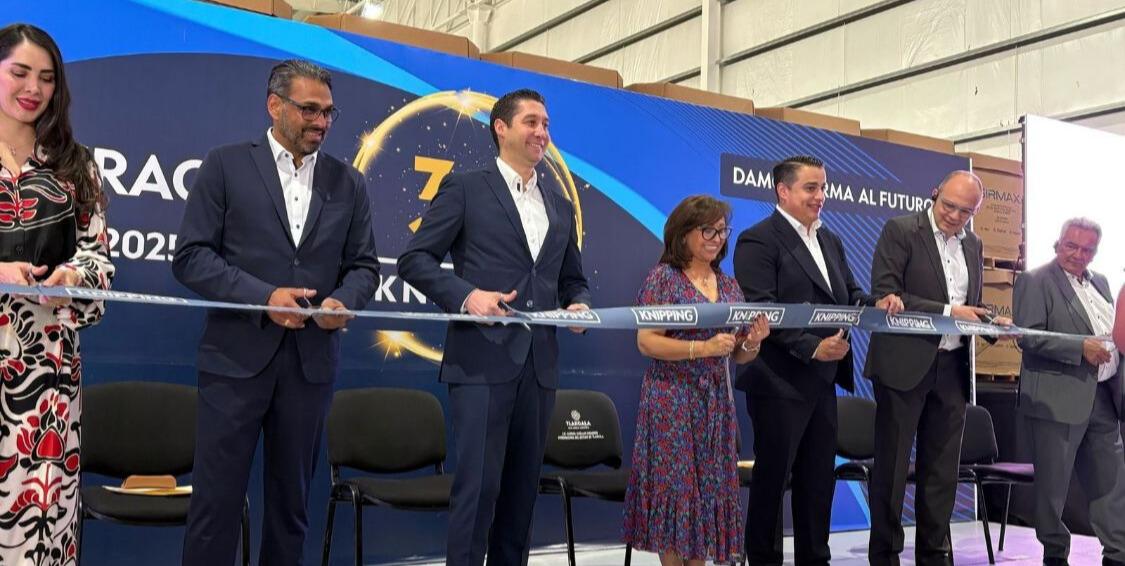
Knipping Kunststofftechnik, a company specialized in the production of automotive components, has officially inaugurated its third plant in Mexico, located in the Huamantla Industrial Park, Tlaxcala. This new facility, which strengthens the company’s presence in the country, represents a $65 million investment.
The Chinese manufacturer of electric motorcycles, has announced the construction of a new plant in Ocoyoacac, with a projected investment of $78.6 million. The facility is expected to be established by May 2025. In later stages, the company intends to add processes such as welding and painting, and to relocate its suppliers from China to Mexico.
Portuguese multinational Neuce Group has laid the foundation stone for its new production plant in Mexico, located in Tetla, Tlaxcala. This project, representing a $31 million investment, marks the company’s first manufacturing facility in the Americas. The new facility is expected to generate 120 jobs once operational.
Kingfa, a global leader in plastic injection molding, has announced an $84 million investment to expand its operations in San Luis Potosí. The project includes the construction of a manufacturing, research, and development complex at the Logistik III Industrial Park, located in Villa de Reyes.
SOURCE: MEXICO INDUSTRY, CLUSTER INDUSTRIAL
NEARSHORING CRITICAL MINERALS:
As nearshoring accelerates, securing a reliable supply of critical minerals has become a strategic priority for North America. This blog explores how Mexico’s untapped mineral potential and trade agreements like the USMCA can support regional energy and technology ambitions. It also highlights the risks of overdependence on foreign suppliers and the need for public-private collaboration to build resilient supply chains. For manufacturers and investors, understanding the role of critical minerals is essential to navigating the next phase of North American industrial policy and sustainable growth.

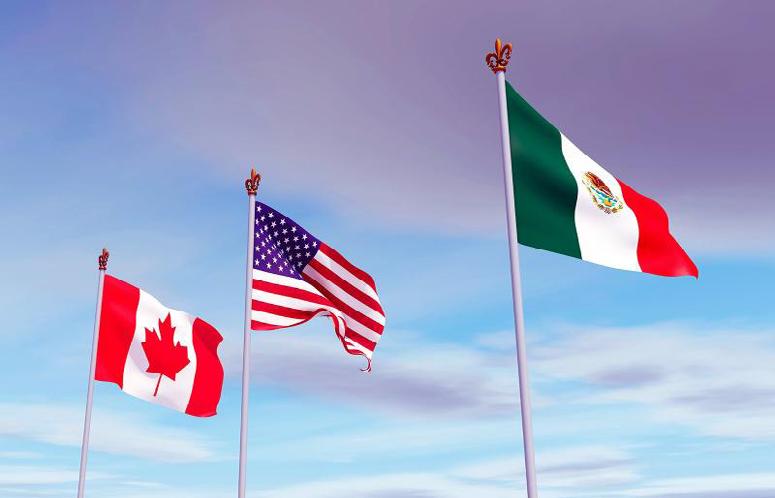
UNDERSTANDING RULES OF ORIGIN: AVOID COMMON MISTAKES IN USMCA CERTIFICATION
Understanding and correctly applying the USMCA’s Rules of Origin is essential for manufacturers looking to qualify for preferential tariff treatment. This blog breaks down the most common certification mistakes—like misclassifying components or lacking proper documentation—that can lead to costly penalties during customs audits. With practical tips and insights from trade compliance experts, the blog serves as a guide for navigating certification requirements and staying compliant across North America. It’s a must-read for any company relying on USMCA benefits to remain competitive in cross-border manufacturing.